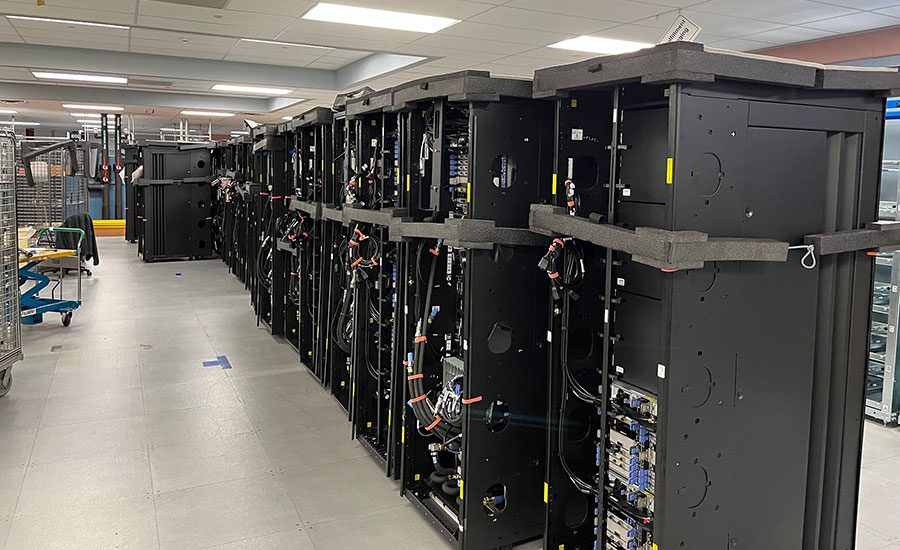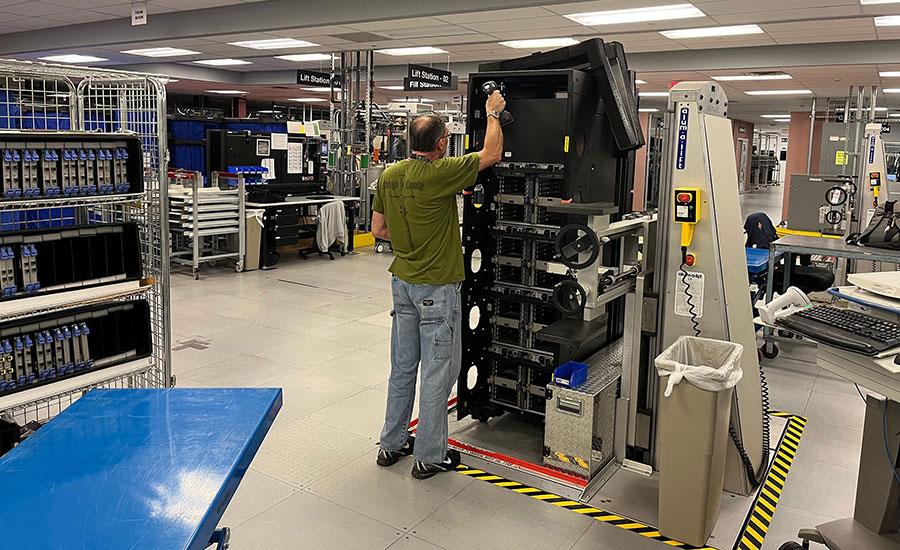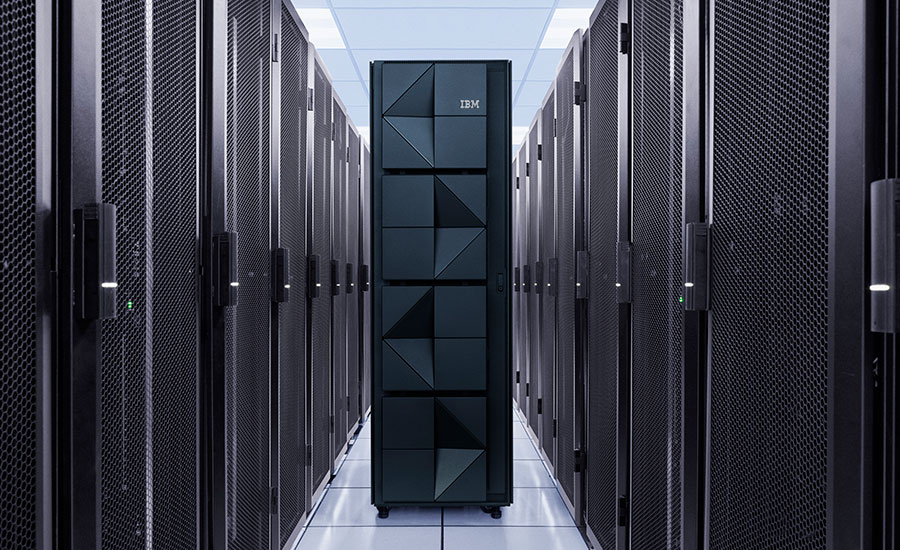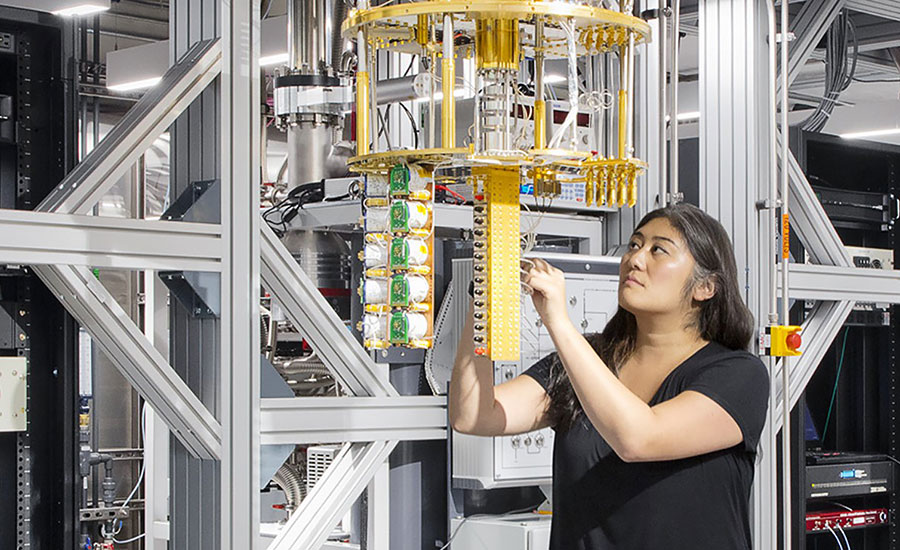Ford Motor Co.’s revolutionary “crystal palace” in Highland Park, MI, which perfected the moving assembly line and mass production in the early 20th century, is often heralded as one of the most important factories in history.
While that plant certainly deserves many accolades, an equal argument can be made about IBM’s operation in Poughkeepsie, NY. The mainframe computers and enterprise systems it has produced for decades are the backbone of cloud computing, e-commerce, online banking, social media and other attributes of the digital age that most people take for granted.
The machines made 70 miles north of New York City can each process more than 25 billion encrypted online transactions per day. They’re found locked away in secure data centers around the world. Customers include airlines, automakers, banks, government agencies, hospitals, hotel chains, insurance companies, pharmaceutical companies, retailers and universities.
In the fast-paced tech world, the high-end machines that were made in Poughkeepsie back in 2008 are considered primitive by today’s standards. At the time, the System z10 mainframe was up to 50 percent faster than its predecessor, the z9, and offered up to 70 percent more capacity.
Today, the latest generation of the Z family (Z stands for zero downtime) is the z16 server, which was unveiled in 2022. It’s designed to dramatically increase data center efficiency by significantly improving performance, while reducing power and cooling costs.

Every machine produced by IBM in Poughkeepsie is custom built. Photo courtesy IBM Corp.
The IBM z16 platform leverages artificial intelligence technology and delivers a variety of cybersecurity features. It is equipped with powerful Telum chips that provide 17 percent more processor capacity per CPC drawer compared to its predecessor, the z15.
Engineers in Poughkeepsie are already developing the next big breakthrough: quantum computers that can manage calculations too complicated for traditional machines. Quantum computing promises to be the next big leap in technology, enabling next-generation applications in artificial intelligence and supercomputers.
President Biden visited the Poughkeepsie campus in October 2022 to see firsthand where the future of computing is being innovated, designed and manufactured. During the visit, IBM announced a plan to invest $20 billion across the Hudson Valley region over the next decade.
“Change has always been and will remain a constant in the Poughkeepsie operations,” says Kevin Dore, plant manager. “The plant is now the sole production site for 100 percent of the IBM Z systems assembly and test for all our customers worldwide.
“The Power Systems high-end assembly and test mission that was here in 2008 [when we were named Assembly Plant of the Year] has been moved to another IBM facility in Mexico,” adds Dore. “We now have a Customer Solution Center here where we do specialized work utilizing the assembly and test skills from our team to build or customize hardware for individualized applications and programs.
“Remanufacturing is still a major part of operations in Poughkeepsie,” explains Dore. “In fact, the mission has expanded since 2008. Today, [we do] 100 percent of the remanufacturing and refurbishing business for all of IBM’s hardware products, including Z systems, power systems, storage systems and appliances. With this increased mission, the volume of work and parts handled is multiple times larger than what was done in 2008.

To improve ergonomics and enable easier access for assemblers, lift stations can raise or lower mainframes. Photo courtesy IBM Corp.
“We have introduced and shipped six newer generations of IBM Z models since 2008,” says Dore. “Each model involved changes in hardware design, components, assembly and test processes. Several involved making significant investments to upgrade our facility for things like additional power feed capabilities across all the test cells, introducing newer internal cooling fluids and the design of new equipment to assist in assembly due to tighter tolerances.
“Just like with the z10 machine, every order is still custom built,” Dore points out. “We never see two of the same products being assembled, unless it’s a customer ordering multiple copies of a machine. And, on average, systems are configured, built, tested and shipped within five days of receiving an order.”
“Our facility was able to stay open throughout the Covid pandemic and not miss any deliveries,” adds Warren Boldrin, manager of ISC operations, high-end order fulfillment and services. “We’re proud of it. That was a testament to our supply chain, the Poughkeepsie operations team and the manufacturing engineering team.”
The basic height and dimensions of the z16 mainframe are similar to the z10, with both products similar in size to a large refrigerator or a vending machine. However, the configuration of the racks inside that hold sensitive components has changed. The z10 featured a 24-inch rack. That has since been redesigned as a standard 19-inch rack.
“In the past, the machines were also water cooled, so customers needed to have their own cooling system,” says Dore. “Now, the machines are designed with an internal water cooling system that acts as a radiator. It’s located in the bottom of the frame and continuously recirculates. We had to install new equipment in our factory to assemble it, and to clean the system out after testing before we ship.
“All of the components used in the z16, from the motherboard to the input-output cards, plus the frame itself, have been completely redesigned,” explains Dore. "The z10 model used a ceramic module with a large back plane. We no longer use that. It’s now a flip-chip organic-type laminate that we assemble in-house. Overall, it’s a simpler and more compact construction. However, the spacing that we have to work with is much different, which has driven some investment in automation.”
“The design and layout of our final assembly line has changed since 2008,” adds Boldrin. “The cleanroom where we assemble the processors and the memory is now right next to the build area. And, the build area is next to the test area, so the actual movement of goods is significantly less than it once was. We now have a lot tighter circle of motion.”

The mainframe computers made in Poughkeepsie are used in data centers around the world. Photo courtesy IBM Corp.
The central processing unit, which is referred to as a “book,” is assembled and tested in an environmentally controlled room to prevent damage. Assemblers install multichip modules onto boards and incorporate the boards into higher level assemblies known as processing unit books or nodes.
“The density within the book itself is now a lot tighter,” explains Boldrin. “In fact, it’s so tight that manually assembling it raises potential quality concerns, such as accidentally hitting or damaging a component.”
“To address this issue, we’re now using collaborative robots,” says Dore. “We have custom designed and implemented cobots to improve quality and increase productivity for critical assembly operations.
“We use cobots to plug the memory components into the book,” Dore points out. “With connectors there’s a very narrow window when it comes to the amount of force required to get a positive connection without over forcing it. We have found that cobots are capable of doing that operation much more consistently than a human.
“There are also throughput improvements, because one operator can run four cobots at a single time instead of being able to manually work on only one book at a time,” explains Dore. “We’re expanding our use of cobots to include next-generation machines that have even tighter tolerances.”
“In the assembly and test area, we’ve added 35,000 square feet of manufacturing space on a raised floor,” adds Boldrin. “It’s very adaptable for running high-voltage power cables to the test cells. We’ve designed the test cells to handle multiple power inputs from the bottom of the floor.”
A powered lift station can raise an entire mainframe to make the lower bays and racks more accessible as assemblers install nodes, power distribution units, wiring and other components. It can also lower a machine up to 18 inches to make the top of it easier to reach.
Another material handling change in the Poughkeepsie plant involves the way that parts and components are delivered to assembly workstations.

IBM constantly invests in its Poughkeepsie operation to improve efficiency. Photo courtesy IBM Corp.
“Everything needed to build a system, including all components that go into the frame, such as all the cards, cables and hardware, is paired up in a cart that is rolled out onto the production floor from a kitting area,” says Dore. “The carts are heavy and moving them previously took time away from operators.
“We’ve introduced autonomous mobile robots (AMRs) to transport parts from cribs to the production floor in an on-time basis and allow operators to focus on complex tasks,” explains Dore. “The AMRs navigate their way to the assembly line after operators send a signal from their workstation. The same technology is used in the book room to deliver various memory components.
“We constantly invest in our operations to improve efficiency, quality, capability and produce new products,” claims Dore. “We have built and implemented software tools with AI capabilities to evaluate the custom requirements for our orders and recommend the most efficient ways to load key capacity gating operations, such as test cells, to maximize throughput.
“In addition, we have implemented the use of hand-held, tablet-based automated visual inspection models to improve speed and accuracy within the assembly process,” says Dore. ”We’ve also implemented RFID tags and tracking across serialized parts throughout the factory.
“And, we are evaluating technologies such as augmented reality to increase our ability to rapidly shift our workforce to different operations and address workload variations,” explains Dore. “In fact, we’re currently looking at how we can use the technology to improve and reduce employee training. We hope to reduce the amount of time required to teach complex assembly operations by as much as 50 percent.”Click here to learn more about the Assembly Plant of the Year award or to nominate a facility for 2024 (the deadline is May 1).







